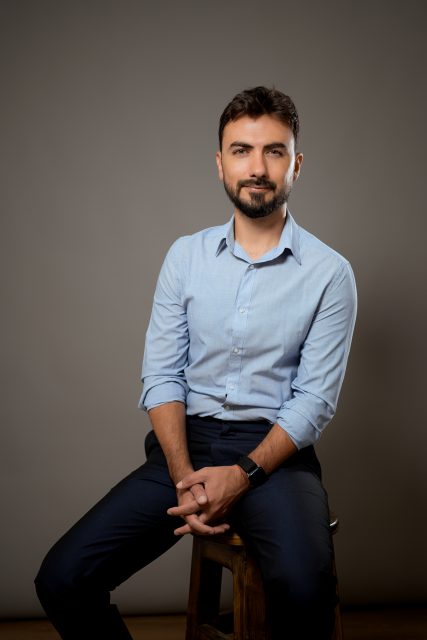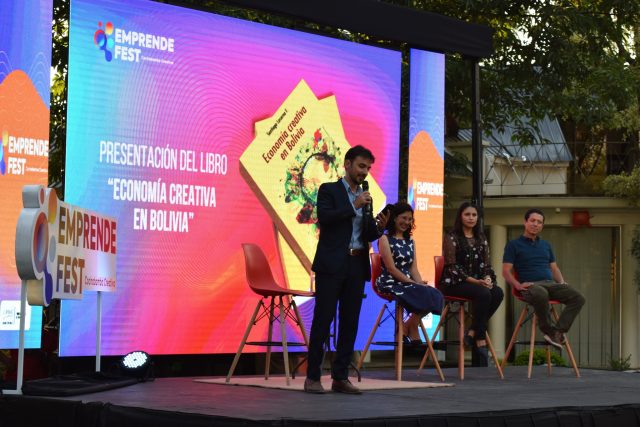
“Bolivia is a country that needs to diversify its economy,” says Santiago Laserna, Project Director at the Center for Studies of Economic and Social Reality (CERES). “To do so, the country must empower local entrepreneurs.”
To support economic diversification and empower entrepreneurs, CIPE and CERES aim to develop an understanding of how the creative economy (otherwise known as the “orange economy”) can foster inclusive growth and democratic participation in Cochabamba, Bolivia. As part of a shared project, CIPE and CERES supported the publication of Laserna’s book, The Creative Economy in Bolivia. In this interview, Laserna reflects on his experiences with and observations of Bolivia’s creative economy.
Note: This interview took place on January 8, 2024, and has been edited for length and clarity.
Could you tell us about your background and your interest in the creative economy?
My interest in the creative economy stemmed from wanting to merge economics with the arts and culture since I studied economics and I’m also a musician and a recording artist. I was excited to read that people were beginning to study how these two fields intertwine. I was the first person to apply the creative economy approach to the Bolivian context, starting with a publication in 2012, and thanks to this project’s first year, I finally compiled all that research into one big comprehensive book.
How would you define the “creative economy”?
In the book, we define the creative economy as every single industry that produces a product or service that has more to do with the creative input or the intellectual capital than the financial capital. To have an innovative idea, people do not necessarily need to have a large investment in capital or infrastructure. For example, a book, like Harry Potter, starts as an idea from an author writing in a café, and transforms into an industry. This highlights the potential of the creative economy to bring together these products and services.

Could you summarize the key findings and the main themes explored in the book?
We used three main approaches within this book. The first focused on finding the percentage of the Bolivian workforce (economically active population) that work in creative industries. We found that 21% of Bolivia’s workforce are employed by the orange economy, highlighting the impact of creativity through employment.
Second, to identify the main challenges and opportunities in Bolivia’s creative economy, we interviewed 12 entrepreneurs from the three main departments in Bolivia: La Paz, Cochabamba, and Santa Cruz. The interviewees highlighted challenges with taxes, participating in the formal economy, accessing resources, and a general fear of regulations.
Third, we conducted Bolivia’s first cultural consumption survey, replicating Argentina’s annual survey, while adapting questions to the Bolivian context.
To continue building on these findings, we will focus on the challenges and recommendations highlighted in this publication. For example, we found that education plays an important role in teaching creativity and innovation, which we aim to further study in the next year.
What factors and/or environment do entrepreneurs need to expand and grow the creative economy, and how has this project supported efforts to create this environment?
In Bolivia, entrepreneurs need a series of policies that allow them to grow without the fear of making mistakes. Currently, entrepreneurs face bureaucratic barriers to open, maintain, and close their businesses. They need an environment that provides flexible policies, including an entrepreneurship law, that will encourage them to formalize their ventures and incentivize creativity.
Through this project, we aim to bring entrepreneurs together, providing a collective voice, via our website economiacreativa.art. In the first year, through our interviews, we identified challenges they face and began highlighting their impact on their economy. Over the project’s next two years, we’ll continue to communicate with creative entrepreneurs in Cochabamba, by inviting them to our forums, clinics and workshops, and hosting meetings with local government officials to continue engaging with these entrepreneurs.
To read more about the creative economy in Bolivia, please find the full Economía Creativa en Bolivia book here with English excerpts available.
Published Date: February 27, 2024